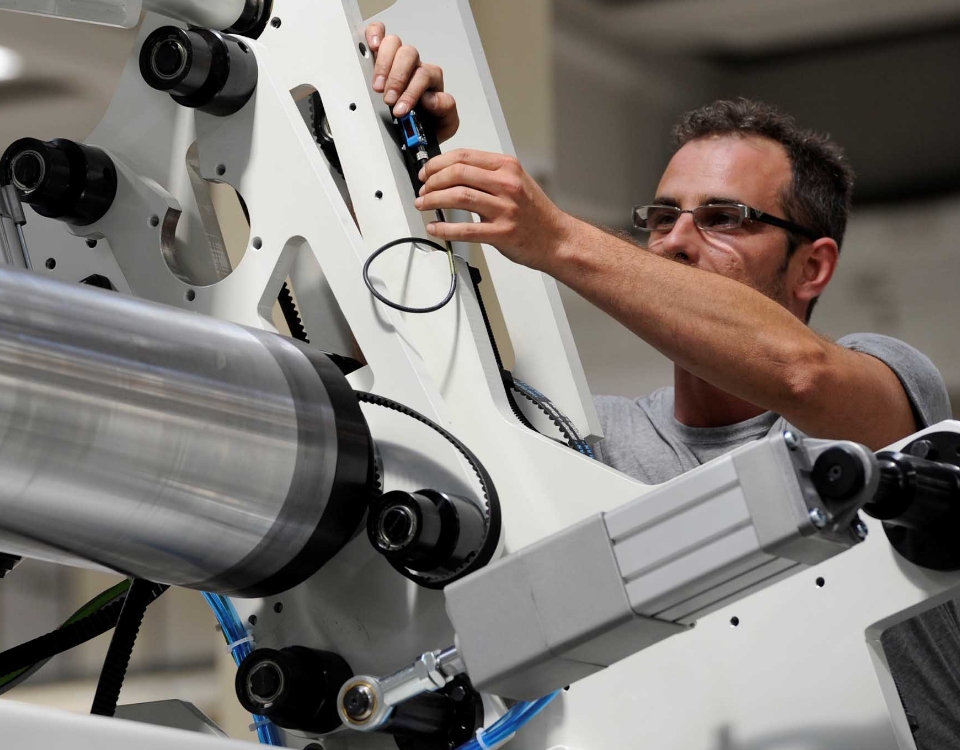
1. Ease of use
Today’s bending companies find it very difficult to find specialised personnel, and are at the mercy of continuous staff turnover. For this reason, the press brake must be simple to operate, with intuitive controls that are easily accessible to all levels of experience, so that the machine can be used in the same way by both the most experienced bender and those entering the industry for the first time. All this will ensure an efficient workflow and a reduction in operating errors. Another important aspect in this respect is the possibility of creating the interconnection between the press brake and the technical department that deals with programming.
2. Precision and consistency
Precision and consistency in bending are key elements in ensuring the quality of the finished product. It is necessary to choose a bending machine that offers high precision right from the start, allowing the correctness of the bend at the first shot, and maintain this precision with constancy. This is especially time-consuming, as it avoids the need to check every corner after bending, especially if the workpieces are heavy and tiring to handle.

3. Ergonomics
The ideal press brake must be ergonomic and comfortable to use. In fact, it is usually thought that it is enough to follow the CNC, the ‘brain’ of the machine that guides you through the work steps. However, the machine must be easily equipped and adaptable at all times, before and during the bending process. For example, a considerable advantage can be given by the addition of self-aligning pneumatic clamps, which have no connecting tubes and can be placed in any position, without the use of tools. Another example is the addition of an automatic tool changer, to perform frequent tooling and complex setups, handle expensive and heavy tools or special parts. This will improve productivity and reduce the risk of accidents at work.

4. Impact on workflow
The press brake must integrate perfectly into the workflow and not cause slowdowns, interruptions or difficulties. It is necessary to analyse the entire process, not just the bending phase, in order to make a choice that brings improvements both before and after it. Usually, the operations can be in the order of design, cutting, handling, bending, preparation, welding and finishing. Each of them is closely related and affects the others. Therefore, it would be advisable to choose a press brake that can produce an optimal part with minimal corrections, in the shortest time and with a single operator, with reduced muscular effort and a safer process. For example, a part that is easy to bend, means a part that is easier to design and cut; a perfect bend, allows the part to pass directly to the welding stage, avoiding preparation and/or correction. In this way, downtime is reduced and there is a net increase in productivity and efficiency.
5. Performance Control
The press brake must have an integrated control system to monitor and optimise work. The machine must allow the various departments to constantly monitor its production and progress. Not only from a quantitative point of view, but especially from a qualitative one. It is important, in fact, to know whether the press brake is working correctly or not, perhaps through a bending report. This translates into the ability to control its performance, and consequently the quality of the finished product. Usually, the bender acts manually, checking the angle with the protractor; however, by using a system such as angle control, you can monitor the quantity and quality of the parts produced more quickly and effectively. This will help you identify any problems and continuously improve your work process.

In conclusion, choosing a press brake is an important decision that you will have to make carefully. Taking these five criteria into account will certainly help you choose the press brake that best suits your needs. It must be remembered, however, that these needs differ depending on the industry and the type of product to be manufactured. The most important aspect, therefore, is always your needs: each press brake must be designed like a suit, tailor-made for you.
If you need further information or would like to discuss your requirements with us:


